By Robert H. Whiter
And here we have the Sam Browne belt assembly,” explained the sergeant who was showing us around the Police Academy. A couple of other leaders and myself, together with about 30 Boy Scouts, were enjoying the tour and demonstration of police equipment.
“Why is it called a Sam Browne belt?” asked one of the scouts. “Was he a real person or had they just made up the name?”
“Apparently he was a famous police officer of the past, and he designed the belt,” the sergeant told the scout.
I wasn’t about to correct the good sergeant in front of all the scouts and onlookers, but my son (nothing daunted him) proceeded to enlighten him with a brief description of the man and his life. This took place about 10 years ago.
Recently, while perusing a Police and Law Enforcement Equipment Catalogue, I found the same pistol belt and its accessories still described as the “Sam Browne” assembly. [Note: The cross-bracing straps were declared redundant some years ago; it was claimed they gave crooks something to grab, to the detriment of the arresting police officer.] Just who was this Sam Browne who gave his name to the belt that, with very few modifications, “encircled the globe”?
Samuel James Browne was born in India of British parentage in 1824. It was while serving as a captain with the 46th Bengal Native Infantry during the Indian Mutiny (1857-1859) that he won his Victoria Cross.
On August 31, 1858 at Seerporah, India, Captain S.J. Browne, with only a loyal sowar (orderly), advanced ahead of his detachment and attacked a rebel 9-pounder gun crew who were reloading and about to fire on the rest of his advancing men. The gun was captured and the crew killed—but not before the captain had received two severe sword cuts, one in the left knee and another that severed his left arm at the shoulder. This still didn’t prevent Captain Browne from cutting his own assailant down.
In those days most swords hung by two straps and dragged on the ground, relying on the chape at the bottom of the scabbard to prevent wear. The sword-bearing soldier would normally lift up the weapon in his left hand and carry it when on the move. With the loss of his left arm and hand, Browne could no longer do this.
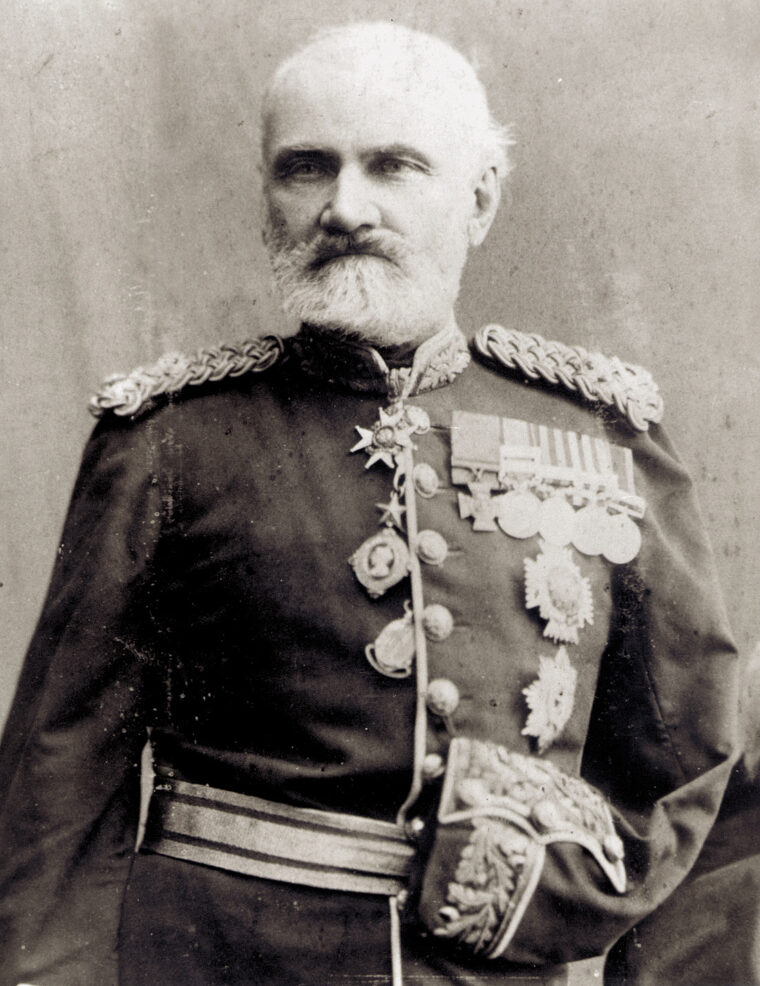
Using his little gray cells, the now one-armed officer proceeded to design a belt and harness that would still enable him to both carry and use his sword. It is generally accepted that he enlisted the services of a native Indian leather worker to fashion the very first Sam Browne belt. This original belt is reputed to have been preserved by one of Browne’s old cavalry regiments, and can be seen in their museum (12th Frontier Force, Indian Army).
With few modifications the design has survived, and even today is used whenever ceremonies (particularly with swords) are needed and the khaki uniform (British Army) worn. The Royal Canadian Mounted Police also have retained it in use with their scarlet tunics and blue breeches uniform.
By the time of the second Afghan War (1870-1880) two armed officers saw the practicality of the “Sam Browne” belt and unofficially started to adopt it for active service wear.
As with many inventions, other people have claimed to be the originators. Sir Basil Montgomery of the 60th Rifles (King’s Royal Rifle Corps) and Sir James Douglas (Royal Horse Artillery) have each put forth claims as being the original creators.
The Anglo-Boer War of 1899-1902 saw it being officially adopted; the 1900 edition of Dress Regulations for the Army contains the following: “The ‘Sam Browne’ belts, Pattern No. 397, Sealed January, 1900. Worn by officers of all branches of the service.”
The waist belt is 2 3/8 inches (6 cm) and of a length to suit the wearer. It is fitted with a double-tongued brass buckle, and has four brass Ds for the shoulder belts (two at the back and one on each side), a running loop for the free end of the belt, two brass rings for attachment of the frog, and a hook for hooking it up. The waist belt is lined with faced basil.
The shoulder belts are plain straps crossed at the back through a loop. They are 1 1/2 inches wide. The patterns are about 35 inches long overall, without chapes. The length, however, may be varied to suit the wearer. They are fitted with studs for attachment to the Ds at the back of the waist belt. A chape, with stud and a buckle, is provided for each for attachment to the Ds at the sides of the belt. In mounted services the strap over the left shoulder need not be worn, except when it is required to support the revolver.
The frog is fitted with two straps, which are passed through the rings on the lower part of the belt. Each strap is secured by a stud. The frog has a small brass D on the top, to go over the hook on the belt when “hooking up.” A small strap passes through the front and back for securing the sword scabbard. A stud is fitted on the front of the frog upon which the tab of the scabbard supporter may be fastened.
A small strap for steadying the sword hilt is attached to the rear ring for the frog, holes being made in the strap to pass over a stud on the belt above the front ring.
The ammunition pouch and pistol case are fitted with loops on the back for attachment to the waist belt, also with stud and tab fastenings. The loop on the pistol case is furnished with a small brass hook, which should pass through a hole made for the purpose in the belt to suit the wearer and to secure the case and keep it in position. The pattern pistol case is to be regarded as typical only, because its dimensions must suit the particular pattern of pistol carried.
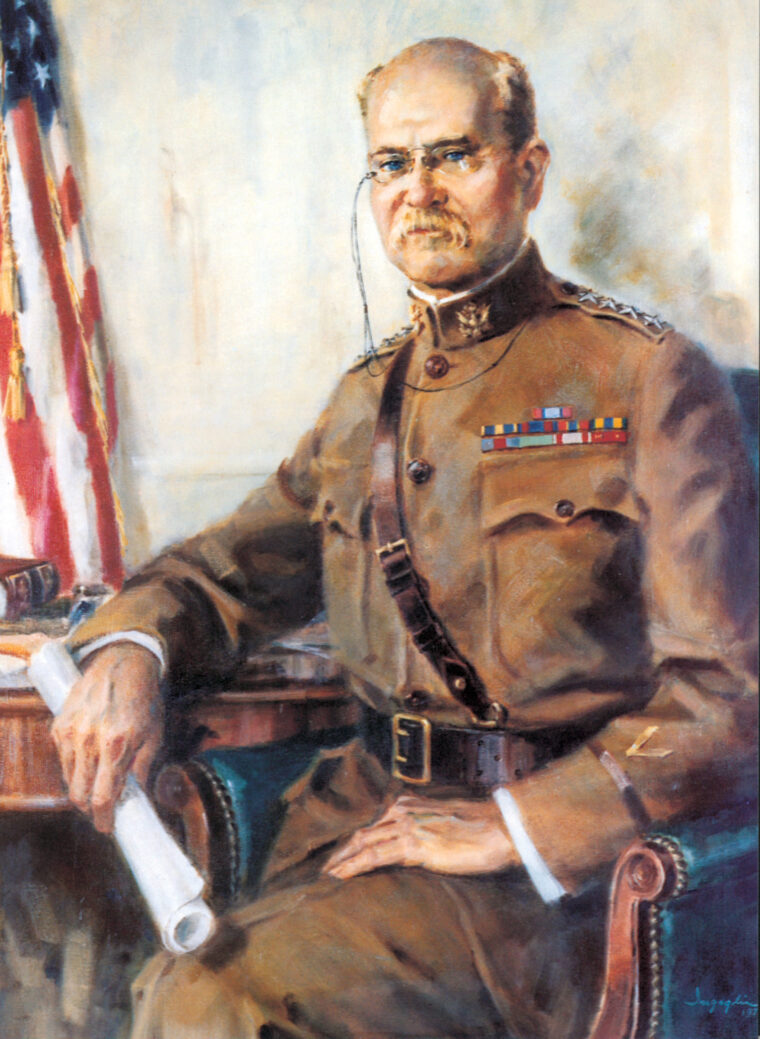
The “furniture” should be of the best yellow brass. Basically the whole idea was a device that held the sword in its scabbard clear off the ground and would enable (in Sam Browne’s case) a one-armed man to draw his sword without having to hold the scabbard in his left hand. As mentioned in the “Dress Regulations,” a small strap passing through the hilt steadied the sword when not in use. The sword and scabbard, using the ring and hook, could be hooked up even higher, giving more freedom of movement to the wearer—no getting the sword caught between the legs!
When not wearing a sword on active service (World War I seeing the final demise of the sword as a weapon), some officers took to wearing the pistol on the left side. But while some wore it directly on the belt, using the loop on the back of the holster, others adapted the frog straps and carried it slung.
This method generally had the butt pointing to the front, giving a crossover draw.
There were exceptions, however. Lieutenant Colonel Edward G. Bethune, who had lost his right arm, had a Mauser self-loading pistol complete in its wooden holster stock suspended in the manner just described, but with the butt pointing to the rear.
There were many variations used in hanging the pistol holster. I have even seen an ordinary strap with dog leash swivels riveted at each end, the latter after being passed through the holster loop clipped onto the belt Ds or rings.
Then there were some officers who, for various reasons (probably the most importantly that of making themselves as inconspicuous as possible so as not to aid snipers), carried a rifle as well. Those who did sometimes used the frog to carry the bayonet. Various other attachments were added to the belt assembly over the years, some unofficial. These included cartridge loops and a tubular holder for a whistle sewn on the crossover straps. In the case of the cartridge loops, this gave quicker immediate access when reloading the revolver, when not using half- moon clips or speed loaders.
While brown was the standard color or finish of the Sam Browne equipment (again there were exceptions), some rifle regiments had blackened leather Sam Brownes, matching their jet buttons and badges.
It was during World War I that the Sam Browne belt really achieved international status—practically all the Allied armed forces adopted it in one form or another. Highly polished and worn with only the single crossover strap, it soon became the symbol of authority. To the young subaltern on obtaining his commission, putting on the belt was almost like the newly trained airman receiving his wings.
When regimental sergeant-majors in the British Army were given the privilege of wearing one, the event was celebrated in a ballad, “When the Sergeant-Major’s on Parade,” composed by Longstaff—the opening lines run as follows:
When the sun is shining bright,
Dispelling all the dews of night,
With Sam Browne belt and buttons bright,
Behold the Sergeant-Major!
Batman makes my army bed
And soon my boots are luster shed
He turns me out from foot to head
A dapper Sergeant-Major!
I remember when attending the Armorer’s Course at Melton Mowbray during World War II (I was in the British Army) the sergeant-major in charge of regimental training most of the time wore service dress complete with Sam Browne as opposed to battle dress and webbing. Numerous soldiers, not knowing the difference at first sight, would salute him! This would bring forth a blistering tirade—“Don’t you know the difference—I’m not an officer!” Actually, the fact that his tunic was buttoned up at the neck, no collar and tie, should have told them.
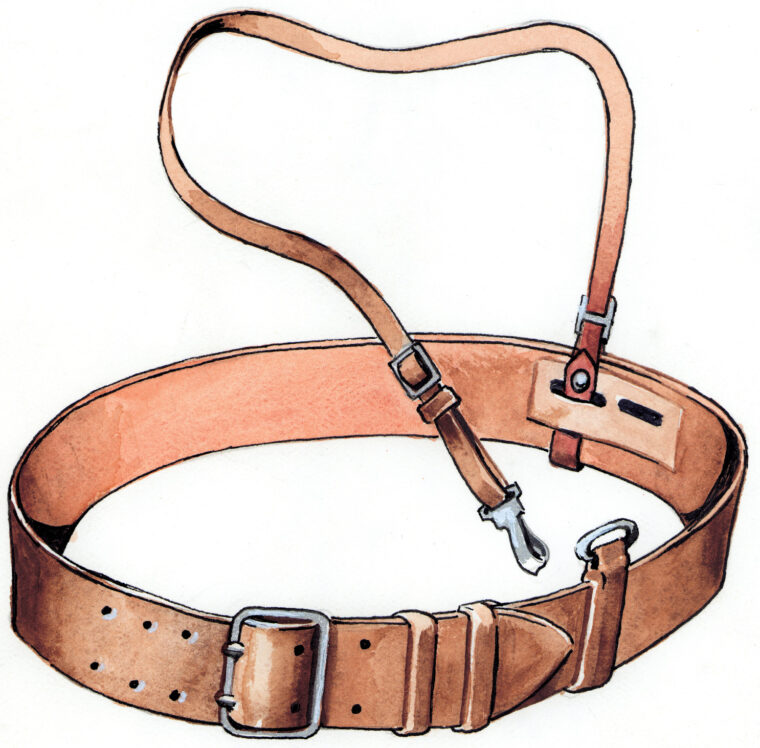
Although the use of the two supporting shoulder straps gradually gave way to the wearing of just one, in the British Army a few regiments continued to use both braces (suspenders). These included the 60th Rifles, The Rifle Brigade, and the Cameronians (Scottish Rifles). There is a photograph of Robert Baden Powell, the founder of the Scouting movement, who, while acting as military secretary in South Africa in 1888, is shown wearing his Sam Browne with the two supporting straps crossed in the front.
While most regiments discontinued the double-brace practice, according to Major R.M. Bames in 1950, only the Cameronians and the Ox and Bucks Light Infantry (the latter using a special pattern) retained the double shoulder straps. With the disbanding and amalgamation of so many of the regiments it is doubtful whether even this still applies.
Most of the Allies adopted the Sam Browne belt during the 1914-1918 conflict, but despite extensive photographic research, I can find no evidence that any of the Central Powers did. But it didn’t take Hitler long to realize that here was another item to add glamour to the uniforms that would eventually be worn by so many of the Third Reich’s military and paramilitary organizations.
The SA, SS, Nazi Party, and Labor Front officials and most other political leaders wore a modified version, the buckle generally taking a different form. Usually it was either the box shape of the traditional German Army’s belt fastener, but with a different motto, or the circular clasp type, again with the motto of the particular party inscribed. Army officers generally used the more familiar double-pronged, open kind; Hitler himself favored this pattern.
When the shoulder strap was used (on active service it was gradually discontinued) it was attached to the sidearm’s side of the belt. For example, if a dirk, dagger, or sword were carried, the strap would automatically go to that side (the left), whereas a pistol would require the strap to be positioned to the right side.
In the United States the Sam Browne continued to be worn until June 7, 1943. Some time before, on November 26, 1942, a cloth belt with a brass buckle and made of the same material as the tunic to which it was sewn was approved. When the Soviets were in power, the Russians, besides using the two-pronged open buckle, in many cases decorated their Sam Browne belt with a superimposed star.
At one time or another the armies of the following countries have embraced the Sam Browne belt: Belgium, China, Czechoslovakia, Eire, Finland, France, Germany, Greece, The Netherlands, Italy, Japan, Norway, Poland, USSR,UK, United States, and Yugoslavia.
For the collector, quality and price vary when the belts crop up in auctions and military shows. Prices range from $80 to $600.
But what of Sam Browne himself? Immortalized by his belt, the captain who had won his country’s highest honor continued to serve with distinction in many campaigns. He later received the Knight Grand Cross and K.C.S.I, or Knight Commander, becoming Sir Samuel, and achieved the rank of general. He died on the Isle of Wight, off Portsmouth, England, in 1900 at the age of 76. A fine marble monument extolling his many achievements can be seen in Saint Paul’s Cathedral, London.
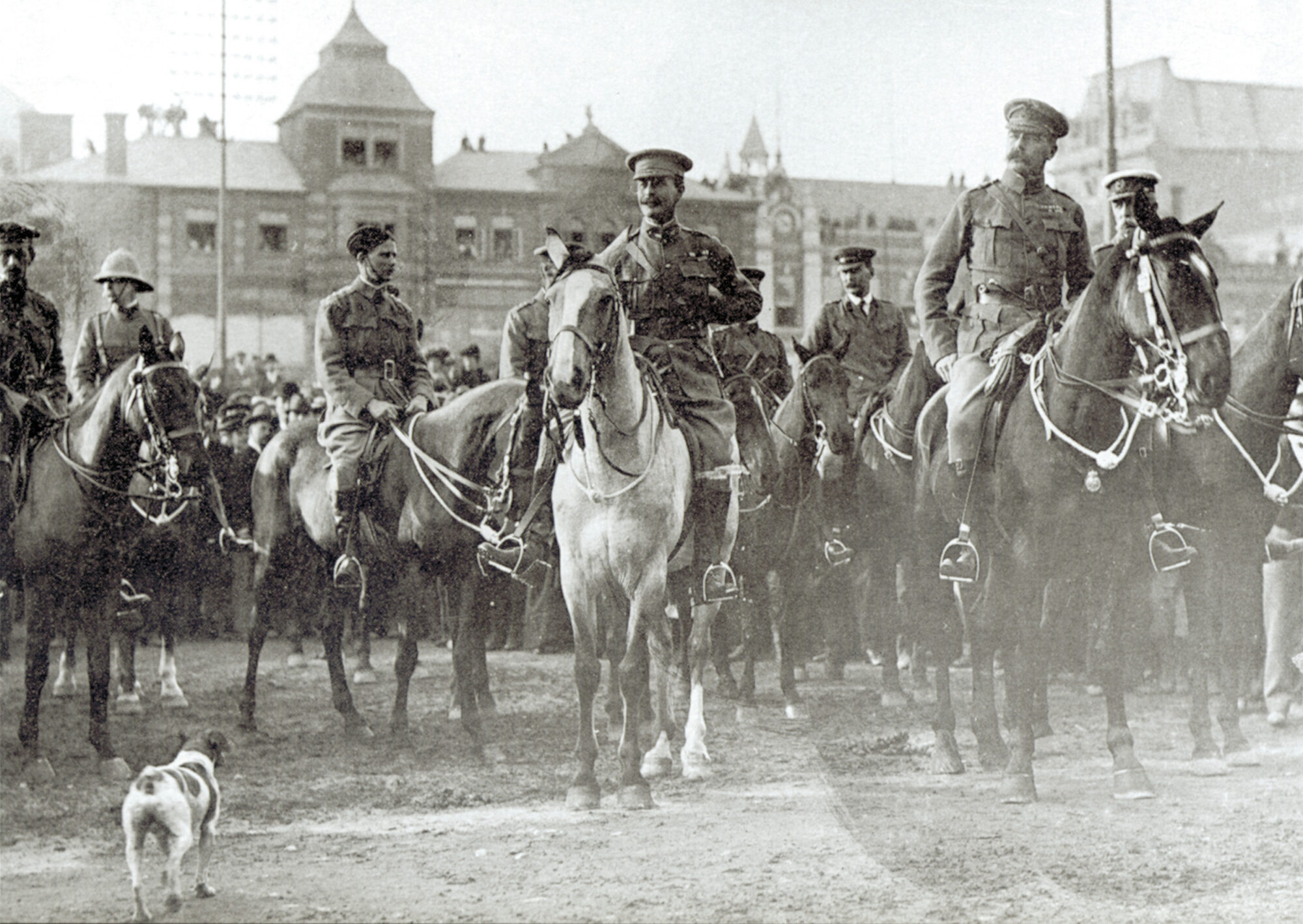
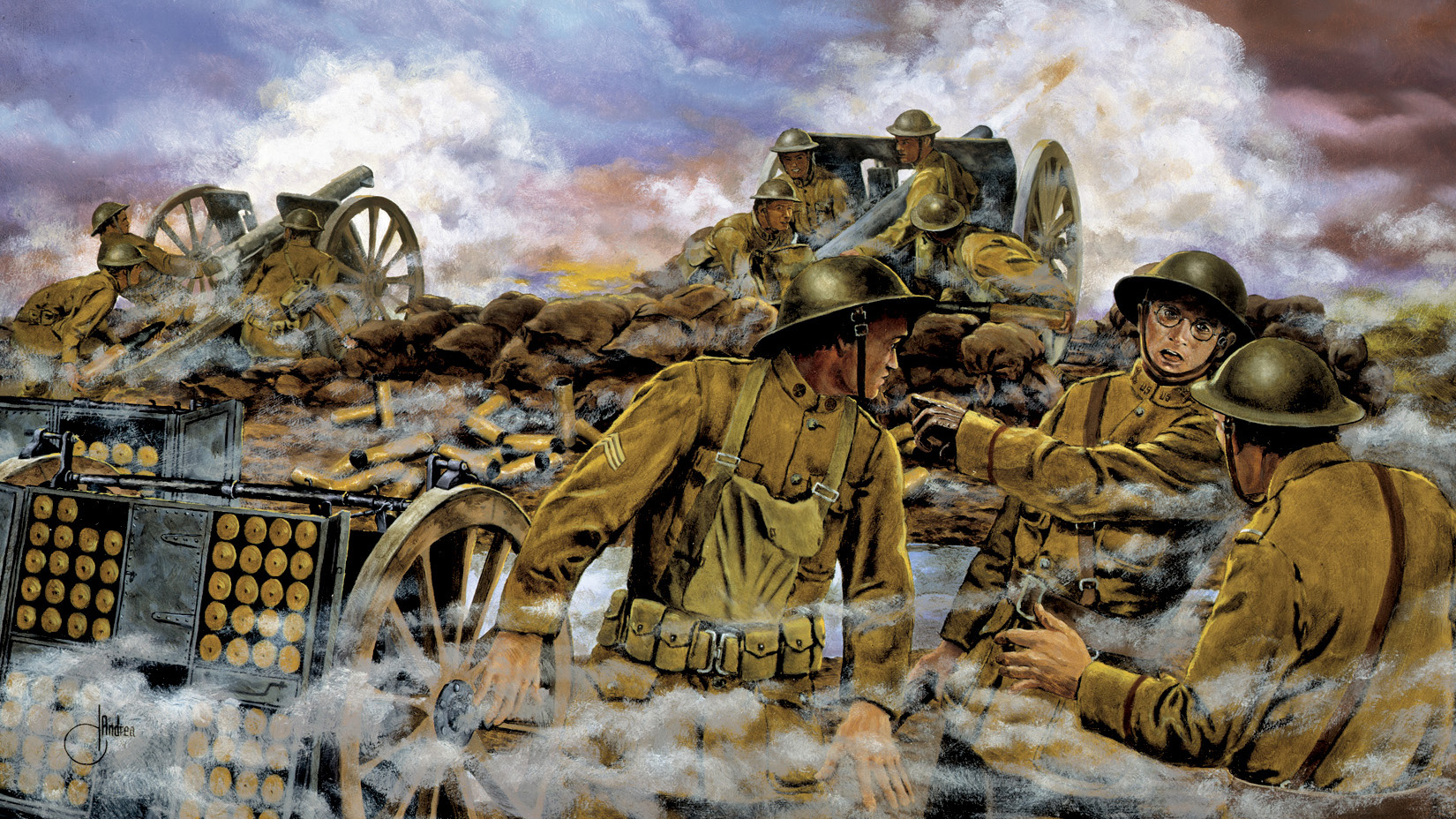
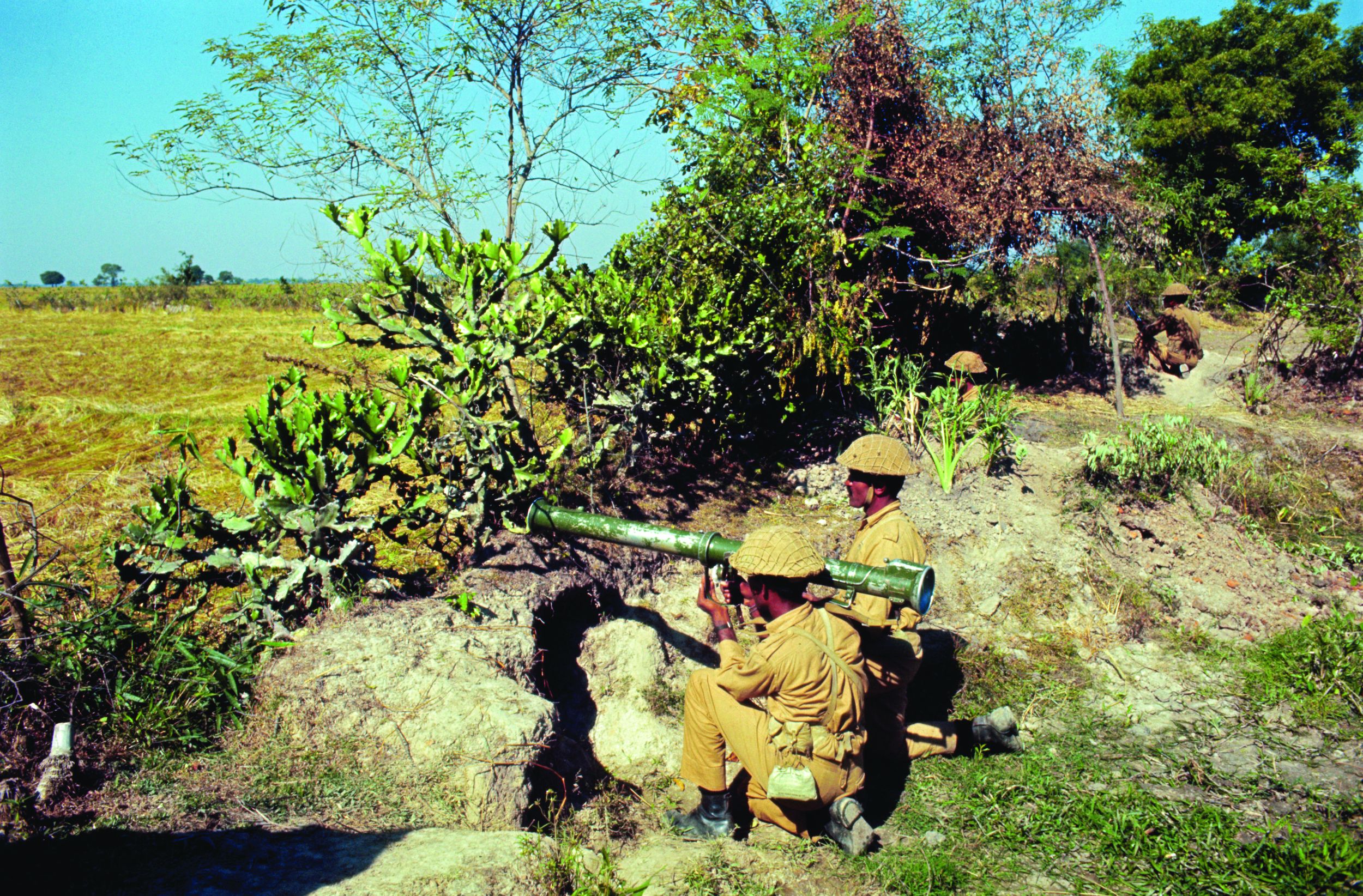
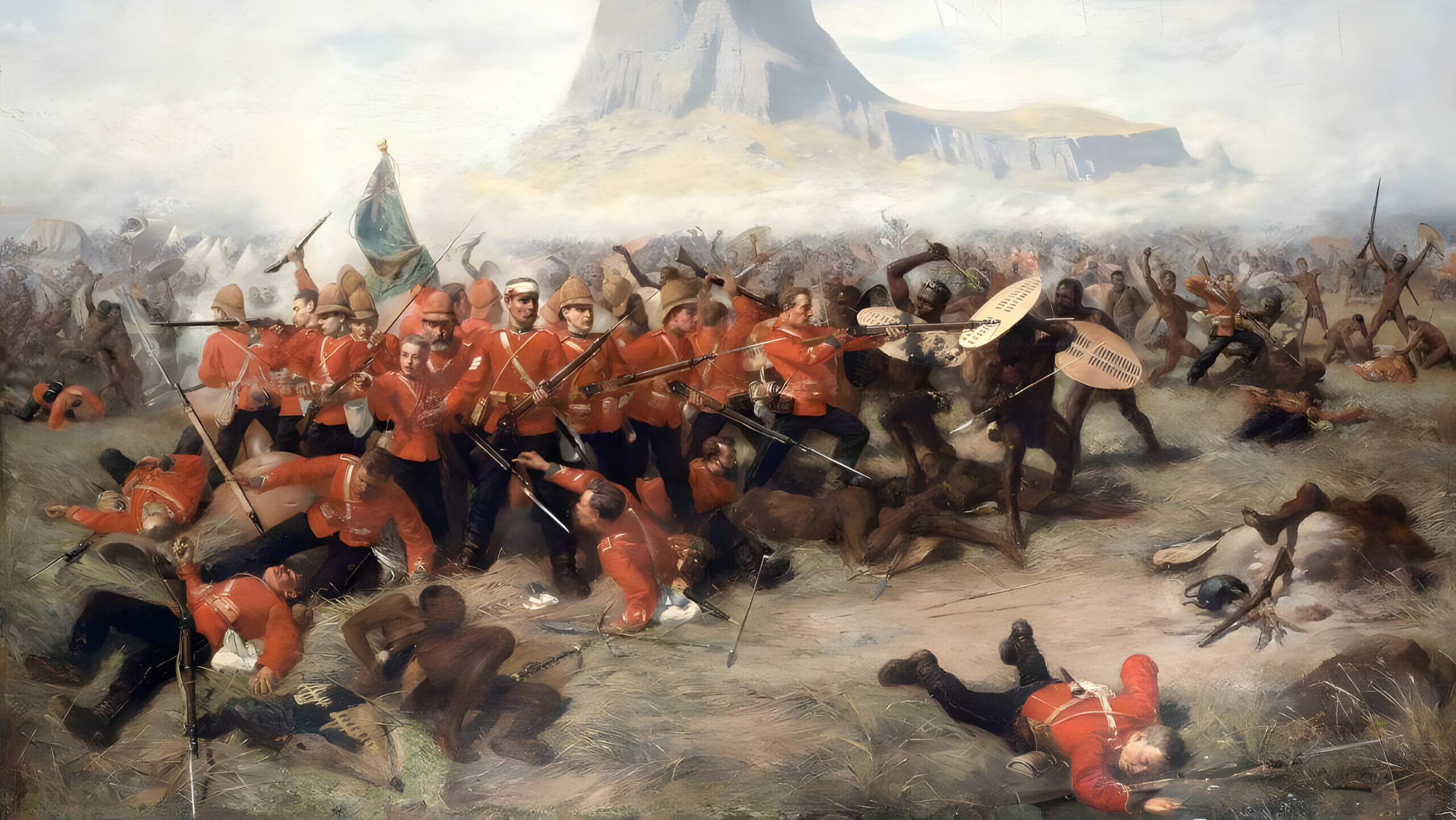
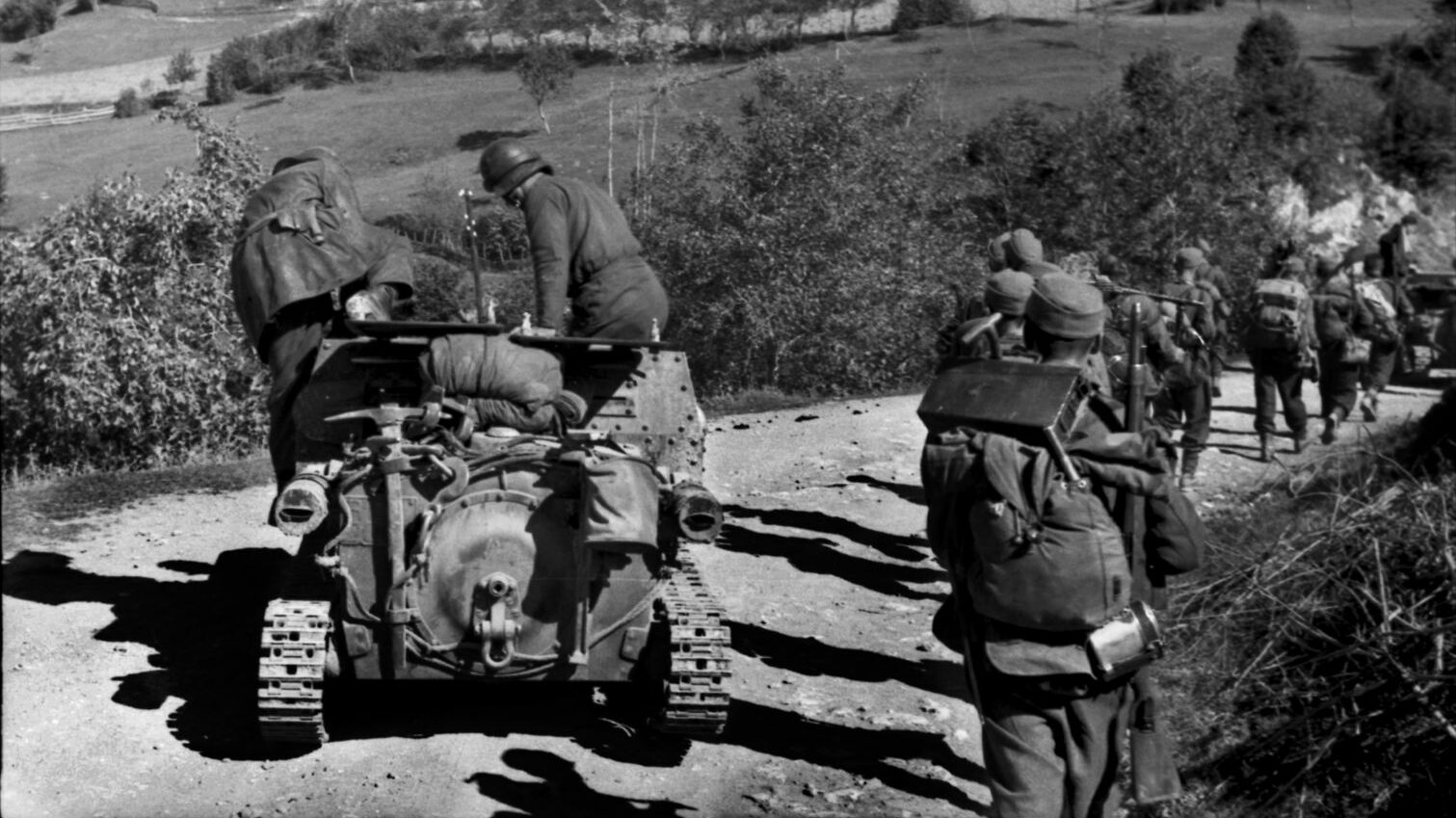
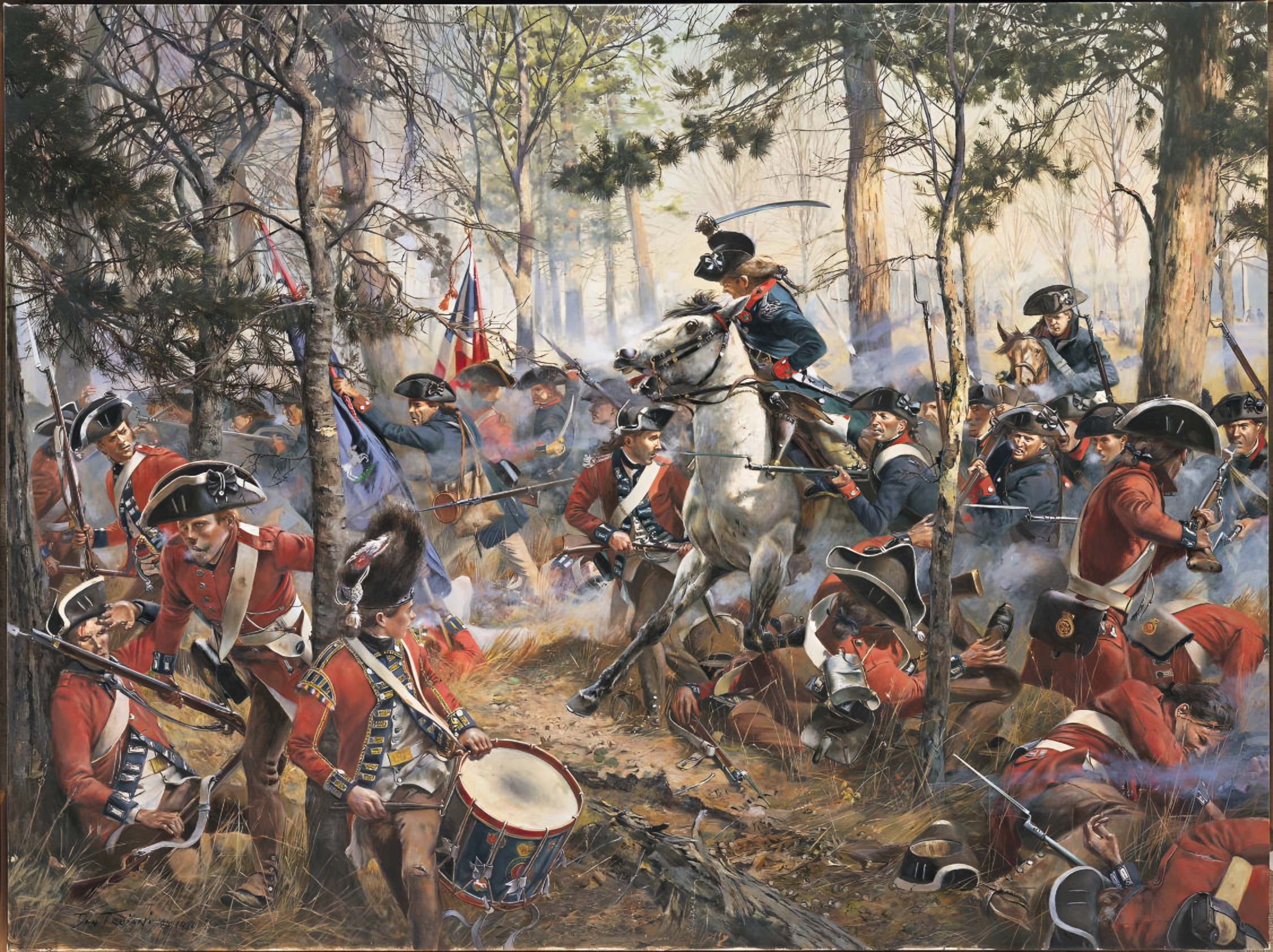
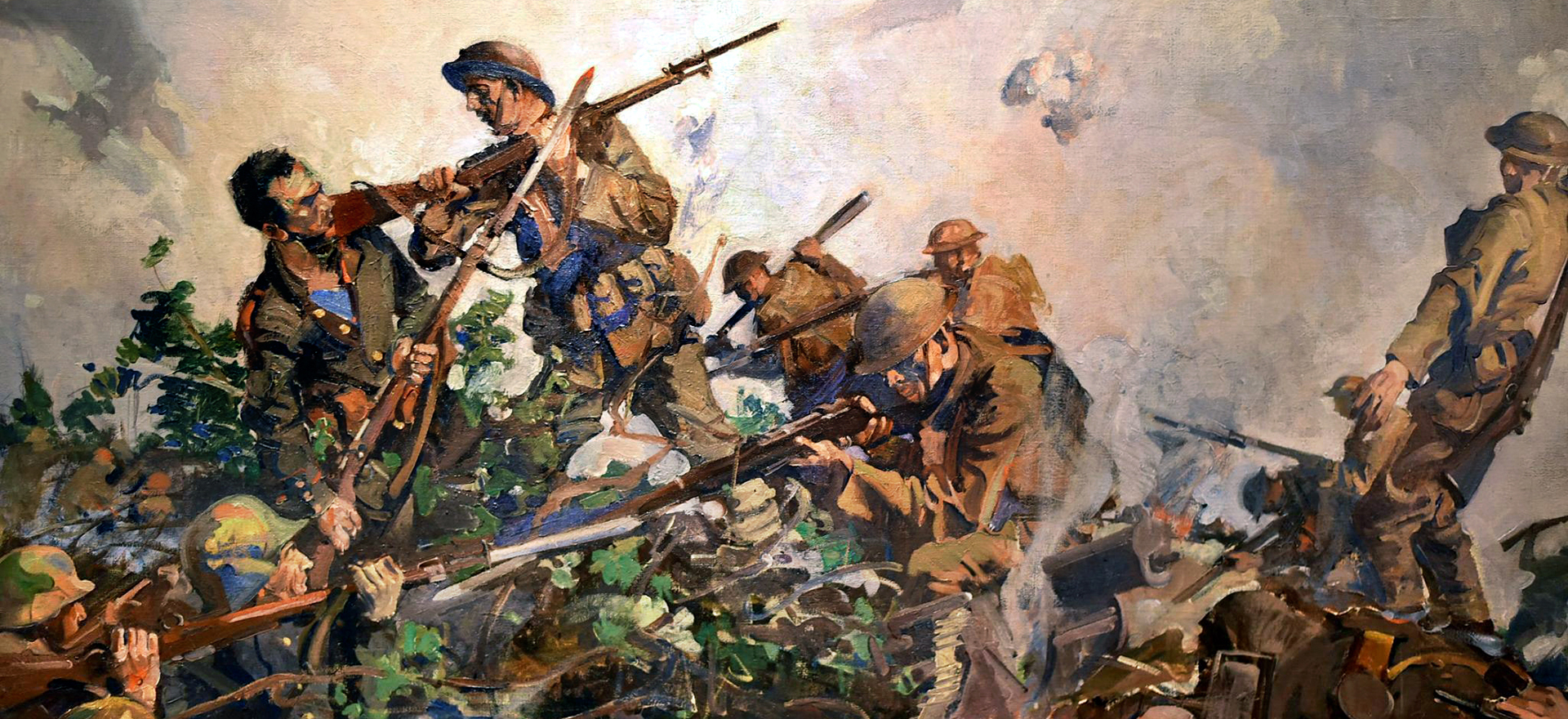
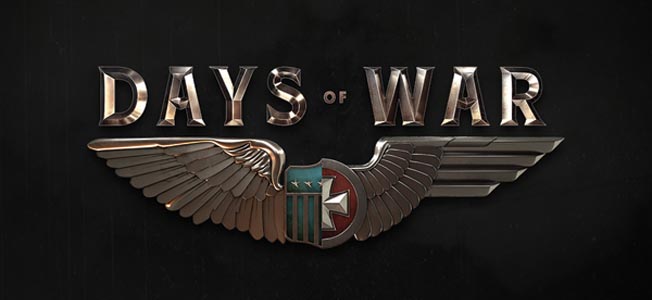
Join The Conversation
Comments
View All Comments